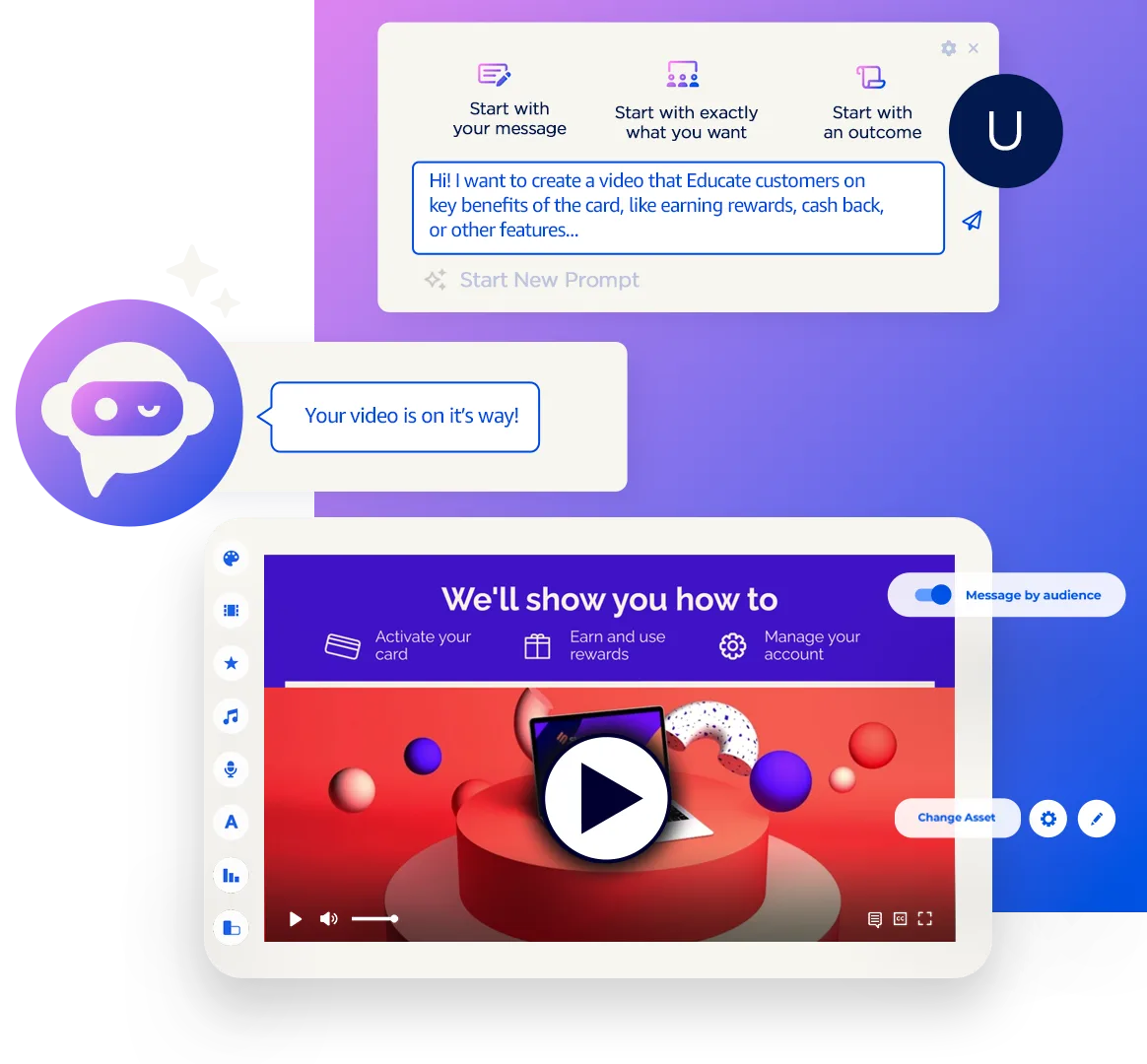Maybe you are new to personalization technology, or perhaps you’re a seasoned pro. No matter your level of experience with personalization, it’s a marketing technology that is constantly a work in progress, as are the platforms and processes behind it. Now that we are approaching the midpoint of the calendar year, we at SundaySky want to remind you of how your brand should be using personalization the right way in 2018. Think of this as a refresher course on the subject. Don’t worry, there won’t be a test, but if you follow our syllabus you’re sure to get an A+.
The Definition of Personalization
What is personalization? According to Wikipedia, personalization consists of “tailoring a service or a product to accommodate specific individuals, sometimes tied to groups or segments of individuals.” Personalized content, in particular, is content that is targeted to the consumer, adaptable to each consumer’s profile and purchasing behaviors. The assets that comprise the content vary from person to person, depending on the unique consumer data which brands have at their disposal. However, at the core of any personalized content is the humanization of the consumer. At SundaySky we often liken the experience to a tailor who specializes in bespoke custom clothing. The bar is at the highest when personalized content creates meaningful dialogues with consumers on a one-to-one level, making consumers feel more emotionally connected to the brand.
Categories of Personalization Services and Software
Before you serve your customers the meal that is personalized content, you need to decide what kind of dishware you’ll be serving it on. In other words, choosing the platform for your brand’s personalization content strategy is a necessary first step. In an article from SmartInsights, Dave Chaffey lists four categories of personalization services and software available to brands. They are:
Personalization integrated with web analytics – Examples of these personalization platforms include Adobe Target (one of the more well-known engines, originating from the Touch Clarity), IBM’s Watson (real-time personalization software) and Google Optimize 360 (offered free as A/B testing to all Google Analytics users, while the full version is available to enterprise subscribers).
Personalization software as a service (SaaS) for ecommerce – this software is designed specifically for online retailers and collects consumers’ behavioral data while offering personal recommendations. DynamicYield, OmniConvert and RichRelevance are some of the personalization software solutions which reveal the cumulative number of products viewed by customers on a site, along with offering suggestions of other products which consumers may want to purchase.
Personalization integrated with CMS / commerce management systems – Episerver, Sitecore and Kentico are content management solutions, but come bundled with tools to personalize content according to such variables as geography and search terms. They can also deliver more granular personalization based on consumer behavior and profiles.
B2B, marketing automation and publisher website personalization tools – For companies other than retailers, some of the best B2B personalization solutions are those that can place content on various locations around a website. Examples include Evergage, BrightInfo, Idio (enterprise-class), Ion Interactive (enterprise-class) and Sitespect. Marketing automation systems like HubSpot, Marketo and Salesforce have also begun to include aspects of personalization functionality. For instance, HubSpot’s ‘Smart Content’ feature allows companies to target content based on the phase a prospective buyer is at in the customer lifecycle, or even specify content for first-time site visitors.
The Importance of Cross-Channel Platforms
Personalized content must be accessible for the ever-widening array of mobile devices and online delivery funnels. Although this will require adjustments in the technical specifications and formatting, going cross-channel with your personalization content strategy means you’ll be able to engage and entertain consumers with content which lines up precisely with their digital habits and preferences.
As VideoAmpChief Strategy Officer Jay Prasad said in our recent Video Center of Excellence blog article, “The trend we are seeing is toward cross-screen audience capabilities that link linear TV to all digital video and over-the-top content (OTT). It’s a much more effective way to reach people. Our clients realize that consumers don’t want to see the same ad thirty times in the same place. Now clients want to vary the creative and deliver it across platforms.”
Roadblocks to Adopting Personalization Technology
Personalization is not without its challenges. One of the biggest concerns is privacy as it pertains to brands safeguarding consumers’ personal information, while consumers are fearful of their identity being exposed for public consumption. For more on this topic, please check out our article on calming the fears, confronting the challenges and dispelling the myths of personalization.
Having a Dedicated Personalization Team
As personalization gains popularity among brands, more companies are creating the position of a Chief Personalization Officer (CPO) to oversee personalization content strategies. In an earlier blog article about the CPO, we described the CPO as a high-level marketing executive “who succeeds in putting the “person first” in personalization at the core of a brand’s marketing, advertising and customer experience strategies, focusing on the next-best action for every consumer interaction. In a manner similar to the Chief Customer Experience Officer or the Chief Digital Officer, the CPO must work as a matrixed cross-functional leader, interfacing with every customer-facing function and back-office function to develop a brand’s personalization strategy and initiatives. The CPO serves as the chief storyteller for a brand, articulating strategy and story across all customer touchpoints for a true one-to-one level of engagement. A CPO must also oversee the organizational structure and tech stack as they relate to these efforts.”
In addition, brands should establish a video center of excellence (VCE), a group of individuals committed to ensuring a set of best practices and standards when deploying personalized content. We defined VCEs in the first of a series of articles as “dedicated practice areas within organizations that bring creative, marketing and analytics disciplines together under one roof, where every story ‘fits.’ How long are the videos? Are they being properly displayed? Is the messaging on brand? The video center of excellence services these and other creative and technical concerns.” For example, ad fraud is a potential issue of a personalized video campaign. However, a brand’s VCE can set benchmarks to protect against ad traffic that is mechanical instead of human, offers zero viewability and intentional misrepresentation. As we indicated in our second article about VCEs, “The raw data acquired by a video center of excellence reveals the ugly truth, warts and all, about the quality of the ad experience and whether ad fraud was involved. This obligates brands to study the data points rigorously in comparison to their video campaigns in the marketplace.”
Great Examples of Marketing Personalization
If you want to see how personalized content can work for your brand, you’ve come to the right place. On the SundaySky website you can see examples of personalized advertising and CRM solutions across the telecommunications, ecommerce, insurance, healthcare, banking and travel industries.







![The SaaS Pulse Show [Podcast] featuring SundaySky CEO Marc Zionts](https://sundaysky.com/wp-content/uploads/2025/01/SaaS-Pulse-Show-png.webp)